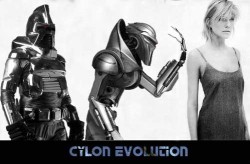GK Van Patter recently asked the question:
What is the impact of consciously or unconsciously importing on-line interaction dynamics into organizational cultures?
Is that importation inevitable? How is that importation impacting organizational cultures today?
What do you think? Good question? Where do we start?
Online interaction dynamics might refer to styles of work and time organization, meeting management, distribution of information,structuring of departments and line accountabilities, task assignment and project management, management style. I would suggest all of theseare affected by our experience and learning from social Web interaction. Bonnie Nardi et al wrote in First Monday back in 2000 how organizational knowledge dynamics were changing due to people relying on “intensional networks” for problem-solving versus identifying local experts and contributors in the organization itself. Organizations, as Cluetrain Manifesto aimed for, are becoming more porous and less secretive, extending their knowledge networks through virtual networks of team members.
Another example that comes to mind is how our attention spans in organizational discourse are mediated by the Web multitasking experience. While it may be a blessing that some meetings are shorter now (in product teams due more to Agile than anything else), my experience has been that less ground is covered. I”ve been involved as a consultant in several projects where significant issues are missed and surface later (sometimes months) because of the fragmented, bullet-listing style of meeting and project management. To some extent this may draw from our everyday experience of paying less and less attention to more and more things online. Then carrying over that impatient mindset to the world of F2F social interaction.

One participant made reference to Karen Stephenson’s work in online interaction, trust, and organizations. The finding of how people backstab in competitive environments using BCC to inform undisclosed third parties of their direct discussions with people is a bit disturbing. I’m sure some of this is cultural and perhaps related to organizational size and type as well. Not being an insider anymore, I have little insight into this dynamic – but its a bad trend and one that makes me grateful for being a consultant for hire and not one that has to worry about insider politics.
Personally, I’d prefer the social knowledge network measure of the number and depth of email discussions to external consultants and non-paid advisers. In other words, how often are people in large organizations using their intensional networks for local problem solving?
